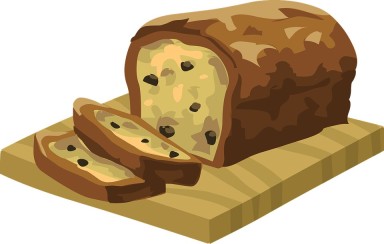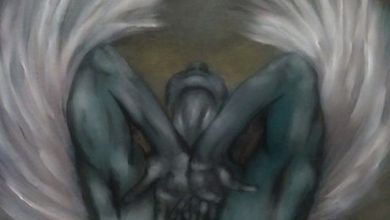
Bread by Margaret Atwood is an indictment meant to condemn individuals who enable misery and sorrow via their indifference. Atwood uses bread as a symbol to touch upon the larger themes of the power, perception, connection and control.
Bread | Summary
Bread is a short story published in 1983. In the story, each paragraph depicts a distinct situation. Each covers bread and how having no bread or having plentiful bread might influence an individual. The reader has three various sorts of bread to choose from in the first paragraph of the text. Atwood may be suggesting towards the Western middle classes, a world in which people have much more than they require. Though, they may not be able to relate to individuals who have little or nothing. This is emphasized in the second paragraph of the tale when Atwood suggests taking yourself to another room. Against the backdrop of famine, Atwood asks the readers to imagine a character. The character is hungry and torn between eating the last piece of bread they have or giving it to their sister, who is also starving. The question asked by Atwood is whether to be selfish here because of the stronger chances of survival of oneself or to help someone else.
The third paragraph unfolds in a prison. The reader is made to consider themselves as a prisoner who must confess what their captors want them to for survival. In case of refusal on your part, it is going to be your last night. However, you don’t think about the piece of bread they offered you. All you can think about is a yellow bowl that held apples and pears and stood on the table in your home. The absence of the yellow bowl is causing you more pain than hunger. Atwood seems to be suggesting that for the prisoner, home is a source of comfort.
In the fourth paragraph, Atwood refers to the German folk tale ‘God’s Food’. The story illustrates how those who have a lot can be selfish and greedy, regardless of who asks for help. In the folk tale, the woman feels no sympathy for her sister. This is significant because it implies that the woman has forgotten her roots and is instead blinded by her success. She has refused to help her sister and her children abandoning them to die of hunger. The husband slices the bread and blood ooze out. This could represent the sister’s blood. She and her starving children will undoubtedly perish due to a lack of food.
In the final paragraph of the story, Atwood takes a sarcastic tone. “You confirmed it bypassing your palm through,” Atwood says. She describes the bread as floating in the air with no strings attached. She’s underlining the fact that this image is real. It is not a figment of our imagination, and we are aware of it.
Bread | Analysis
Bread by Margaret Atwood is an indictment meant to condemn individuals who enable misery and sorrow via their indifference. Her argument is oblique. Her language is deceptive at first and flows down smoothly. However, it soon becomes heady with empathy for her unwitting reader. The essay employs literary tactics to accuse her reader of inhumanity and a lack of concern. The short story is narrated in the first person by an anonymous narrator who leads the readers to accuse themselves by presenting her logic slowly and deliberately, taking them from seemingly harmless actions to self-incrimination, from the mundane to becoming ashamed of their role in the world’s suffering. Atwood uses the final story to overtly criticize the reader, continuing to leverage the bread metaphor to represent the wealthy’s callous denial. War has much to do with the description of pain and its causes. War is a technique of bringing prosperity to some people while starving another. War is both a cause and an outcome of greed and deprivation. Those who are at ease, content, and complacent, who live in luxury routinely discuss the poverty-conflict nexus, but they are reticent to use the term.
Atwood appears to lure the reader into a condition of an agreement. She does so by employing a common object as a symbol, like a loaf of bread, which appears inoffensive to those who live a life of affluence. By presenting her argument, which does not appear to be an argument at first, in the form of five collaborative stories, she progressively pulls the reader from comfort to guilt in manageable increments, without inciting the reader to take a defensive stance and reject what is true.
Atwood’s accusation strikes at the heart of today’s global strife, demonstrating that the connection between the wealthy and the rest of the world is fraught with danger. In this era of globalization, the destitute is the one who starts and shapes all wars.
War and destruction are perpetuated because of various excuses for violence. We are as much to blame for world hunger as the sister in Margaret Atwood’s fairy tale is for the death of her sister. The cause of conflict is inequity. Inequality is caused by greed. When we try to convince ourselves that satisfying our self-serving desires does not rob others of life and happiness, we are deceiving ourselves. Our greed is directly responsible for world suffering and bloodshed. We “don’t want to know, imagine that,” says Atwood, whose most startling phrase draws its strength from its veracity in portraying an embarrassing truth.
Bread | Themes
Perception – Atwood challenges human perceptions in the short story. Human beings often limit their perception as per their limited vicinity. In the modern world individualism borders on selfishness. Atwood is highly critical of this aspect of modern society and therefore targets the readers who may think they are not contributors to the current state of affairs. The perception that the way things are going on around us is not because of our efforts has been challenged. Atwood attributes everything that is happening in the world to all of humanity.
Control – Discussion around freedom and free will is an important part of modern civilization. Each individual believes they are free. However, various restrictions seem normal to human beings. We have been trained to view these as something ingrained something unchangeable. The state exerts control on us through many mechanisms; likewise, the wealthy countries exert their dominance over the impoverished.
Greed – Human nature is treated as greedy in the short story. Atwood suggests that every individual is just thinking about themselves. No one is willing to work for the greater good of humanity. Self-growth is valued by every individual. But helping others is not as illustrated by the German fairy tale.
Change – Atwood isn’t just changing the narrative and asking the readers to imagine different situations and people. She is also emphasizing change as a process. Life is never stagnant, it changes continuously. Atwood seems to be mocking the reader to be rigid with their perceptions and not allowing to flow it with the flow of life itself. Change is essentially uncontrollable and humanity needs to be a part of it, not with their greed rather with their duty towards each other.
Bread | Literary Devices
Symbolism – A symbol is anything that alludes to something else, usually something abstract like an idea or a belief. An object, a person, a scenario, or an action that has a literal meaning in a story but indicates or reflects other meanings is referred to as a literary symbol. The symbol of bread connects all humanity. Human beings need bread to survive. However, this bread is available in abundance to some while hardly available to a few. Atwood illustrates the huge gap between different groups by using something as mundane as bread as a symbol.
Allusion – An allusion is a brief, indirect reference to a presumably familiar person, event, statement, or theme found in art and literature, myth and history, religion and culture. As a figure of speech, it enriches meaning by adding layers of association beyond its literal meaning. In the fourth story that Atwood narrates she has alluded to a traditional German fairy tale titled “God’s Food”.
Irony – Atwood showcases the irony inherent in the world we live in wherein some people possess the basic amenities in abundance along with all other luxuries. On the other hand, in the very same world, people die out of starvation. We are not even aware of basic human rights and often turn our backs against the marginalized.
In such a short piece, Atwood demonstrates her mastery of the art of writing, which allows her to convey such a complex issue. It is important to understand the world we live in and not turn a blind eye to people who are suffering. Nothing is beyond human control if proper endeavours are made. This short story encourages human beings to help others and emphasizes broadening our perspectives towards even the most mundane entities.
Bread | Margaret Atwood
Margaret Eleanor Atwood was born on November 18, 1939. She is a poet, novelist, literary critic, essayist, teacher and activist from Canada. She has published 18 collections of poetry, 18 novels, 11 works of nonfiction, nine collections of short fiction, eight children’s books, and two graphic novels since 1961, as well as a number of small press editions of poetry and fiction. Two Booker Prizes, the Arthur C. Clarke Award, the Governor General’s Award, the Franz Kafka Prize, Princess of Asturias Awards, and the National Book Critics and PEN Center USA Lifetime Achievement Awards are among the many distinctions and awards Atwood has received for her writing. Her novels have been adapted for film and television in a multitude of ways. Gender and identity, religion and myth, the power of language, climate change, and “power politics” are some of the themes in Atwood’s works. She often bases her poems on myths and fairy tales. The Griffin Poetry Prize and the Writers’ Trust of Canada were founded by Atwood. She is also a Senior Fellow at Toronto’s Massey College. She is the creator of the LongPen device and related technologies that allow for remote robotic document writing.




